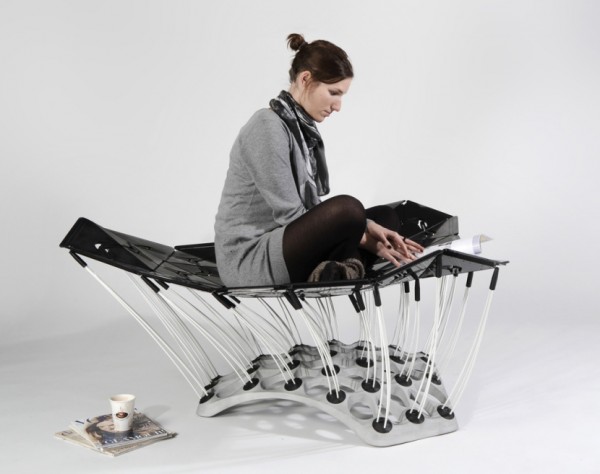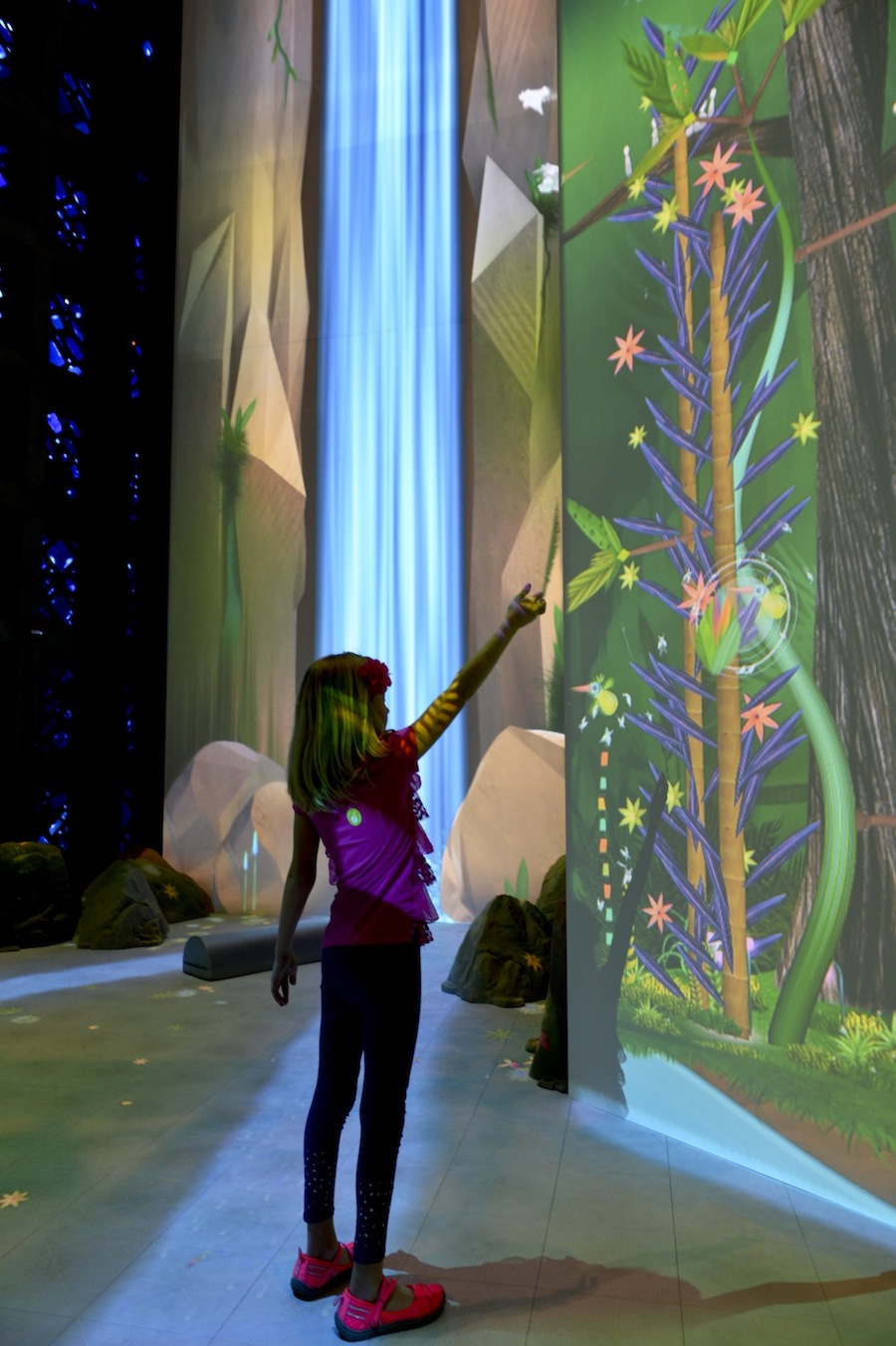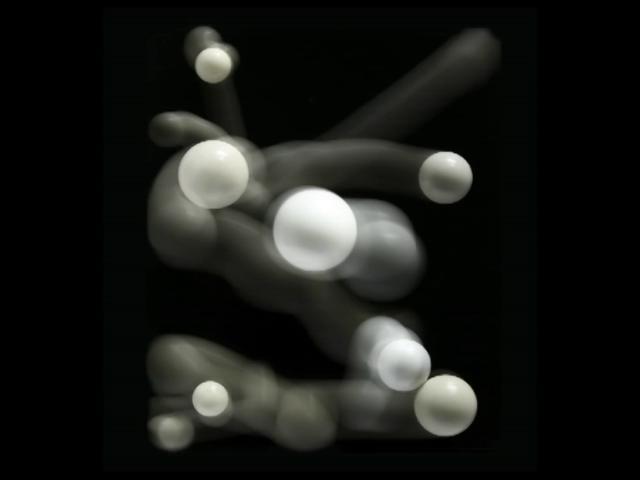
ID5 INTERACTIVE SYSTEMS
flying carpet

flying carpet


Piano
Iwai’s Piano — As Image Media (1995), a later sound work, is related to these early interactive experiments. Here the user, seated at the piano, triggers a flow of images that depress the piano’s keys; a consequence of this action releases yet another flight of images. The resulting interactive installation synthesizes two different aesthetics: sounds (simple melodies), images and a mechanical object (the piano) with digital media. A projected score and computer-generated imagery transform the piano into image media, hence the work’s name. Sound is the triumphant component in these works, for it activates and shapes the visual work. But the visual aspect of Iwai’s installations is lovely. His interactive systems appeal to the creative impulses of adults and children alike with their celebration of animation, computer potential, and the joy of sound.07

Down with Wrestlers with Systems and Mental Nonadapters!
file festival
“The work of Dmitry Kawarga normally deals a lot with ideas of biomorphism. A term and a small branch in art history that was very much influenced and formed by Hans Arp. Not just remaining in biomorphism, like Arp, Kawarga adds a whole new social and urban dimension to the works that make us think of terms like ”rhizome” developed by the post-structuralists Deleuze and Guattari. For Dada Moscow, Kawarga invented a totally new work, which seems to be quite different from the abstract biomorph works he normally does. It is an interactive installation that brings up a very powerful sense of the machine and technology fascination the society before the WWI had and it also shows the brutal consequence this fascination had. Kawarga creates a machine that brings the ideas of social models totally to the absurd.” Adrian Notz

Realistic and Interactive Robot Gaze
System for lifelike gaze in human-robot interactions using a humanoid Audio-Animatronics® bust. Previous work examining mutual gaze between robots and humans has focused on technical implementation. We present a general architecture that seeks not only to create gaze interactions from a technological standpoint, but also through the lens of character animation where the fidelity and believability of motion is paramount; that is, we seek to create an interaction which demonstrates the illusion of life. A complete system is described that perceives persons in the environment, identifies persons-of-interest based on salient actions, selects an appropriate gaze behavior, and executes high, fidelity motions to respond to the stimuli. We use mechanisms that mimic motor and attention behaviors analogous to those observed in biological systems including attention habituation, saccades, and differences in motion bandwidth for actuators.

Нед Кан
Tornado
A 10-foot tall vortex is formed by air blowers and an ultrasonic fog machine inside a sculpture installed in the atrium adjacent to the Winter Garden. The vortex continually changed shape in response to the surrounding air currents.These fluctuations gave the vortex an erratic and life-like appearance. Viewers were encouraged to alter the shape of the vortex with their hands. The calm, central core of the vortex is clearly evident.
Kahn’s interactive scientific projects leave little doubt about his command of meteorological processes. Through his immense technical ability, he demonstrates the versatility of turbulent systems, such as the vortices of wind and water. He employs diverse mechanical, pneumatic and electrical technologies to design, build and refine his installations. This is how he constructs dazzlingly complex but comprehensible images of nature that respond to viewers, conform to architectural structures, and reveal environmental conditions.

Everything
FILE GAMES 2017
Everything is an interactive experience where everything you see is a thing you can be, from animals to planets to galaxies and beyond. Travel between outer and inner space, and explore a vast, interconnected universe of things without enforced goals, scores, or tasks to complete. Everything is a procedural, AI-driven simulation of the systems of nature, seen from the points of view of everything in the Universe.

Samorost 3
Prague-based Amanita Design, creators of the award-winning Mechinarium, recently released what may be their best game yet: Samorost 3. This deeply immersive puzzle game spans the ecosystems of 9 unusual planets as you encounter strange inhabitants and unlock increasingly complex secrets to advance to the next level. Amanita Design’s approach to creating completely non-verbal/non-textual games relies heavily on intuition, sound design, and symbolism to create environments that are practically interactive artworks.

Theo Watson, Emily Gobeille and Nick Hardeman
Connected Worlds
Connected Worlds is an immersive, interactive ecosystem that was designed for the New York Hall of Science. It’s an installation of six smaller ecosystems, actually—all of which are connected, much like real ecosystems are. The difference here is that the environments only exist on massive screens connected by a 3,000-ft² interactive floor.

Том Беддард
Pyramid
After his PhD, the world of the “dot-com” internet boom was more appealing than academia, so Tom became a web developer specializing in e-commerce content management systems. For the past ten years Tom has worked at a variety of agencies in Scotland and now currently works at Glasgow based 55 Degrees, which specializes in interactive museum exhibits and video production. Tom considers himself to be a ‘creative coder,’ a techie who also has an appreciation for the aesthetics. His site, subblue.com, is where he writes programs and plugins exploring mathematical and generative graphics. Where possible, these experiments are interactive and have the source-code available for download. The exposure of his site and the Photoshop and After Effects plugins he has released have resulted in the creation of book covers, music videos, and stage visuals.

Self Organizing Still Life
Acoustically stimulated Interactive Sculptures
David Fried’s “Self Organizing Still-Life” (SOS) is a series of interactive, sound-stimulated kinetic sculptures, which reveal his exploration into the inherent qualities of networked and emergent systems operating far-from-equilibrium intrinsic to nature, individual psyche, communication and social relationships.